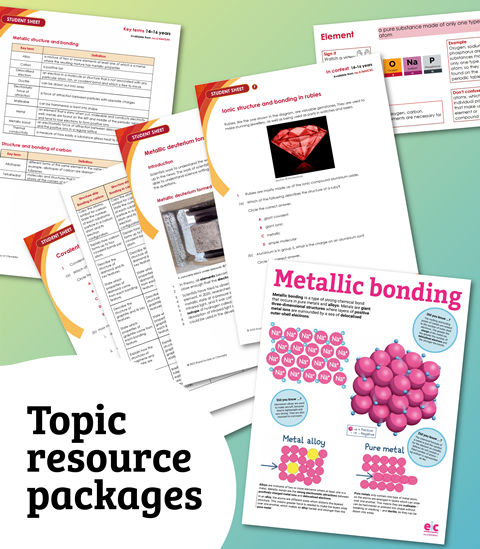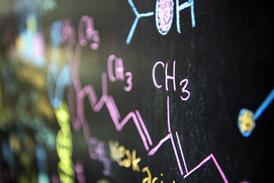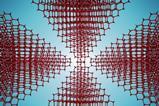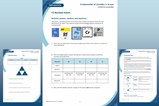Build a solid foundation by starting with the fundamentals
This is the fourth module of a short course covering key ideas for post-16 chemistry learners in order of scale. Find more information about the course here or download the ready-to-use worksheets.
How to use this resource
Before each lesson, ask learners to complete the preparation worksheet to revise knowledge from their 14–16 course or previous lessons and introduce the topic for the lesson.
Then, get them to complete the student sheet during the lesson. It includes all key content and challenges misconceptions. Each student sheet has a scale and a Johnstone’s triangle diagram at the top. Use these to help learners think about the relative scale of different aspects of chemistry and connect their understanding of sub-microscopic, macroscopic and symbolic representations.
The book icon on the student sheets indicates that students will need access to learning materials e.g. textbook or online resources to support their learning.
Begin each lesson by checking learners have completed the preparation work. Share the answers and ask learners to mark their own worksheets as part of their independent work.
Materials
For the practical activity at the start of this lesson, provide each group with a cardboard tray and ~250 pieces of dried pasta.
Topics in this lesson
Preparation worksheet – revision: fusion and nuclear equations; graph drawing.
Student sheet – modelling radioactive decay with pasta; radioactive half-life; alpha and beta particles; calculating decay.
Next lesson: F5 Light and electron energy levels
Downloads
F4 Modelling radioactive decay preparation worksheet
Handout | PDF, Size 1.61 mbF4 Modelling radioactive decay student sheet
Handout | PDF, Size 0.59 mbF4 Modelling radioactive decay teacher notes
Handout | PDF, Size 0.42 mbF4 Modelling radioactive decay preparation worksheet
Editable handout | Word, Size 3.07 mbF4 Modelling radioactive decay teacher notes
Editable handout | Word, Size 0.71 mbF4 Modelling radioactive decay student sheet
Editable handout | Word, Size 1.69 mb


Fundamentals of chemistry | 16–18 years
- 1
- 2
- 3
- 4
- 5
 Currently reading
Currently readingF4 Modelling radioactive decay
- 6
- 7
























No comments yet